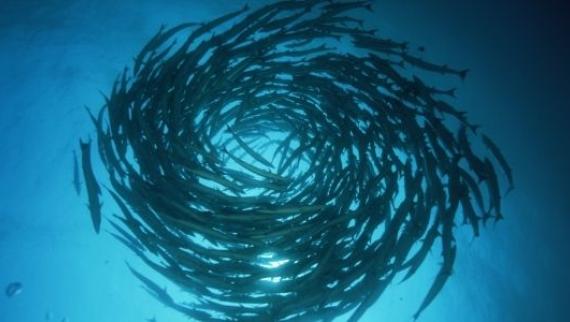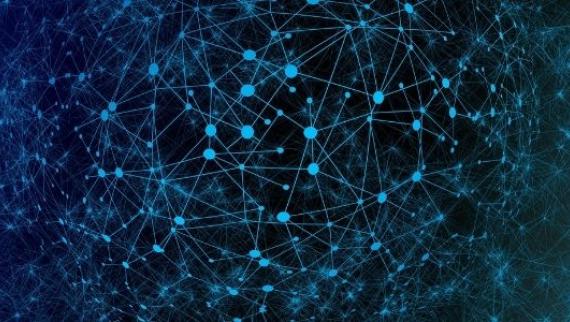Biosystem & Bioprocesses Engineering
From mathematical modeling and computer-aided simulation to design, control and optimization of bioprocesses and biological systems.
The world around us can be explained to a great extent by understanding the systems that compose it and the processes that connect them.
The IIM-CSIC's Biosystem & Bioprocess Engineering group seeks to develop new methods and tools (mainly software) for process systems engineering, which enable the simulation, optimization and control of bioprocesses, such as those involved in food processing and preservation and in industrial biotechnology.
The group applies process systems engineering methods to improve the efficiency of key industrial processes, reducing their environmental impact and improving the quality and safety of their products.
Its focus is model identification, optimization, monitoring and robust control of non-linear dynamic systems, including distributed parameter systems (convection-diffusion-reaction). The group considers a broad spectrum of applications, namely fisheries management, food processing, quality and safety—including antimicrobial resistance—and industrial biotechnology.
- GELFISH -
Producción de oleogeles marinos para la valorización de descartes hacia una pesca costera artesanal sostenible
Principal investigator:TaboadaAnteloLuisFunding body:Proyecto financiado por el Programa Pleamar de la Fundación Biodiversidad, cofinanciados por el Fondo Marítimo de Pesca y de Acuicultura (FEMPA)Funding for IIM-CSIC:351378€Go to project pageFromto - PERIZIA -
<p>Conservación y explotación sostenible de las poblaciones de erizo mediante tecnologías innovadoras basadas en inteligencia artificial</p>
Principal investigator:TaboadaAnteloLuisFunding body:Proyecto financiado por el Programa Pleamar de la Fundación Biodiversidad, cofinanciados por el Fondo Marítimo de Pesca y de Acuicultura (FEMPA)Funding for IIM-CSIC:303205€Go to project pageFromto - ATOPES -
<p>Programa Ciencias Mariñas: Aplicación de Tecnoloxías Innovadoras para a Obtención de Datos Pesqueiros</p>
Principal investigator:TaboadaAnteloLuisFunding body:El Programa de Ciencias Mariñas de Galicia es 1 de los 5 programas de Ciencias Marinas de los Planes Complementarios de I+D+I con las CCAA del Plan de Recuperación Transformación y Resilencia (NextGenerationEU).Funding for IIM-CSIC:137391€Go to project pageFromto - DATAMARE -
<p>Programa Ciencias Mariñas: Plataforma integrada de datos mariños</p>
Principal investigator:VeloLanchasAntónFunding body:El Programa de Ciencias Mariñas de Galicia es 1 de los 5 programas de Ciencias Marinas de los Planes Complementarios de I+D+I con las CCAA del Plan de Recuperación Transformación y Resilencia (NextGenerationEU).Funding for IIM-CSIC:112585€Go to project pageFromto - PreCalA -
<p>Programa Ciencias Mariñas: Ferramentas para a predición da calidade en productos da acuicultura</p>
Principal investigator:VilasFernándezCarlosFunding body:El Programa de Ciencias Mariñas de Galicia es 1 de los 5 programas de Ciencias Marinas de los Planes Complementarios de I+D+I del Plan de Recuperación Transformación y Resilencia. Financiado por FEMP/FEMPA.Funding for IIM-CSIC:100281€Go to project pageFromto
- Pedreira, A.; Vázquez, J.A.; García, M.R. (2022) Kinetics of Bacterial Adaptation, Growth, and Death at Didecyldimethylammonium Chloride sub-MIC Concentrations Frontiers in Microbiology DOI:10.3389/fmicb.2022.758237
- Ovalle, J.C.; Vilas, C.; Antelo, L.T. (2022) On the use of deep learning for fish species recognition and quantification on board fishing vessels Marine Policy DOI:10.1016/j.marpol.2022.105015
- González, P.; Osorio, R.R.; Pardo, X.C.; Banga, J.R.; Doallo, R. (2022) An efficient ant colony optimization framework for HPC environments Applied Soft Computing Journal DOI:10.1016/j.asoc.2021.108058
- Otero-Muras I; Banga JR (2021) Synthetic Gene Circuit Analysis and Optimization " Computational Methods in Synthetic Biology" Humana Press / Springer ISBN:978-1-0716-0822-7
- Otero-Muras I; Banga JR (2021) Automated Biocircuit Design with SYNBADm " Synthetic Gene Circuits" Springer ISBN:978-1-0716-1031-2
- TFM - Andrea Arribas Jimeno (26/09/2022) Aplicabilidad de la tecnología de imágenes hiperespectrales (HSI) como método no invasivo para la evaluación de la calidad del pescado UNIVERSIDAD DE SANTIAGO DE COMPOSTELA
- TFM - Artai Rodríguez Moimenta (19/07/2020) Desarrollo de un modelo de corte mecanístico que permita describir un proceso de fermentación mixta Universidad de Vigo (UVigo)
- TFG - Laura Honrubia Baamonde (11/07/2019) Optimization of Benzalkonium Chloride treatment in the disinfection of L. Monocytogenes in the Food Industry UNIVERSIDAD DE LLEIDA
- TFM - Pablo de la Torre Fernández (20/09/2018) Modelado del proceso de fermenatición vínica: co-cultivo de especies no convencionales Universidade da Coruña
- PhD - Alejandro López Núñez (18/07/2018) CONTRIBUTIONS TO MATHEMATICAL MODELLING AND NUMERICAL SIMULATION OF BIOFILMS UdC
- WASHTOP -
<p>Water Associated Safety Hazards in the Treatment of Produce</p>
Principal investigator:RodríguezGarcíaMíriamFunding body:European Food Safety Authority (EFSA)Funding for IIM-CSIC:80000€Go to project pageFromto
- Capabilities | Development of new food products from fisheries and aquaculture by-products
Development of processes for the transformation of discards and seafood by-products into new raw materials (fish mince, fish oil, etc.) with added value for the generation of innovative processed food products (hamburgers, nuggets, etc.), ensuring traceability, nutritional value and safety in new value chains.
- Capabilities | Development of bioprocesses (biorefineries) for the extraction of bioproducts and bioactive compounds from food industry by-products
Development of processes that allow extracting useful components of industrial interest from discards and food industry by-products and effluents. Biochemical characterization of useful components present in different kinds of fisheries products and by-products, such as skin collagen, visceral enzymes, chondroitin sulphate present in cartilage, chitin from crustacean shells and cuttlebone or protein hydrolysates obtained from muscle. Evaluation of potential applications of these compounds through the characterization of their biological activities (antioxidants, etc.) and functional properties for their use in different industries, such as biomedical, chemistry, cosmetic, food, etc.
- Capabilities | Development of intelligent and active food labels
Development of smart food labels based on models for oxidation, microbial growth, etc. that let consumers know when food is no longer fit to eat, helping to prevent food waste, and give information on freshness, package temperature, etc.
- Capabilities | Development of intelligent sensors for the optimization of food processing and conservation
Development of non-invasive methods and technologies (i.e. hyperspectral imaging technology) for quality inspection of food products.
- Capabilities | Development of integrated plant-wide control and optimization for food industry
Multi-scale modeling for flexible decision-making and optimization of complex processes (i.e., sterilization) based on safety and quality control of food products using non-invasive techniques (software sensors, etc).
- Software | AMIGO2: Advanced Modelling and Identification using Global Optimization, version 2
AMIGO2 is a MATLAB-based multiplatform toolbox designed to solve mathematical optimization problems at the core of systems biology, within the context of parametric model identification, the underlying hypothesis for model development and the optimal control of biological systems to synthetically achieve the desired behavior.
More information here.
- Software | MITS: a Tabu search-based algorithm for mixed-integer nonlinear problems (MINLPs)
Method described in: Exler, O., L.T. Antelo, J.A. Egea, A.A. Alonso and J.R. Banga (2008) A Tabu search-based algorithm for mixed-integer nonlinear problems and its application to integrated process and control system design. Computers & Chemical Engineering, 32(8):1877-1891.
Software available upon request (email us if interested).
- Software | PREMER: fast network inference with information theory
PREMER (Parallel Reverse Engineering with Mutual information & Entropy Reduction) is an open-source, multi-platform software tool for inferring network structures from data using information-theoretic measures. While this general purpose tool has been developed with biological networks in mind, it can be applied to other areas.
More information here.
- Software | ACOmi: Ant Colony Optimization for mixed integer nonlinear programming problems (MINLPs)
The method is described in Schlater, M., J. A. Egea, J. R. Banga (2009) Extended ant colony optimization for non-convex mixed integer nonlinear programming. Computers & Operations Research 36(7): 2217-2229.
Software available upon request (email us if interested).
- Software | BioPreDyn-bench: a suite of benchmark problems for dynamic modeling in systems biology
BioPreDyn-Bench is a suite of benchmark problems for dynamic modeling in systems biology. Currently, it contains six challenging parameter estimation problems, which aspire to serve as reference test cases in this area. This set includes medium- and large-scale kinetic models of E.coli, S. cerevisiae, D. melanogaster, Chinese Hamster Ovary (CHO) cells and a generic signaling network. The level of description includes metabolism, transcription, signal transduction and development.
More information here.














